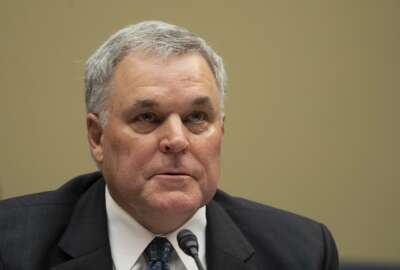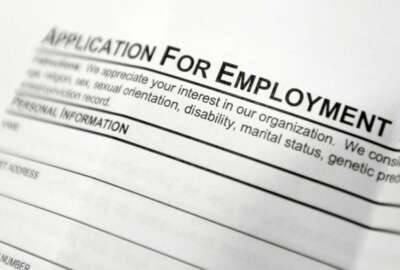Is the federal workforce due for a big growth spurt?
Agencies have done their fair share of hiring during the pandemic, but the size of the federal workforce hasn't budged much in recent years.
Every once and while, usually around the start and end of administrations, a debate surfaces about the size of the federal workforce.
There are studies. Some make the occasional comment about the workforce being too big or small.
But when in doubt, it’s usually a safe assumption that the size of the federal workforce hasn’t changed all that much. And while there may be staffing losses at one agency, other organizations are usually hiring.
According to a Partnership for Public Service analysis of Office of Personnel Management data, there were a little more than 2.1 million full-time and part-time federal employees in 2020, or about 0.6% of the U.S. population.
You can see how the federal workforce as a percentage of the U.S. population has stayed well below 1% since 1980.
Compare today’s figures with those from 1945, the last year of World War II. The federal workforce consisted of nearly 3.4 million people, or 2.4% of the U.S. population.
Comparisons have been drawn between a global pandemic and war. Uncle Sam has about 1 million fewer people working for it today than it did during World War II.
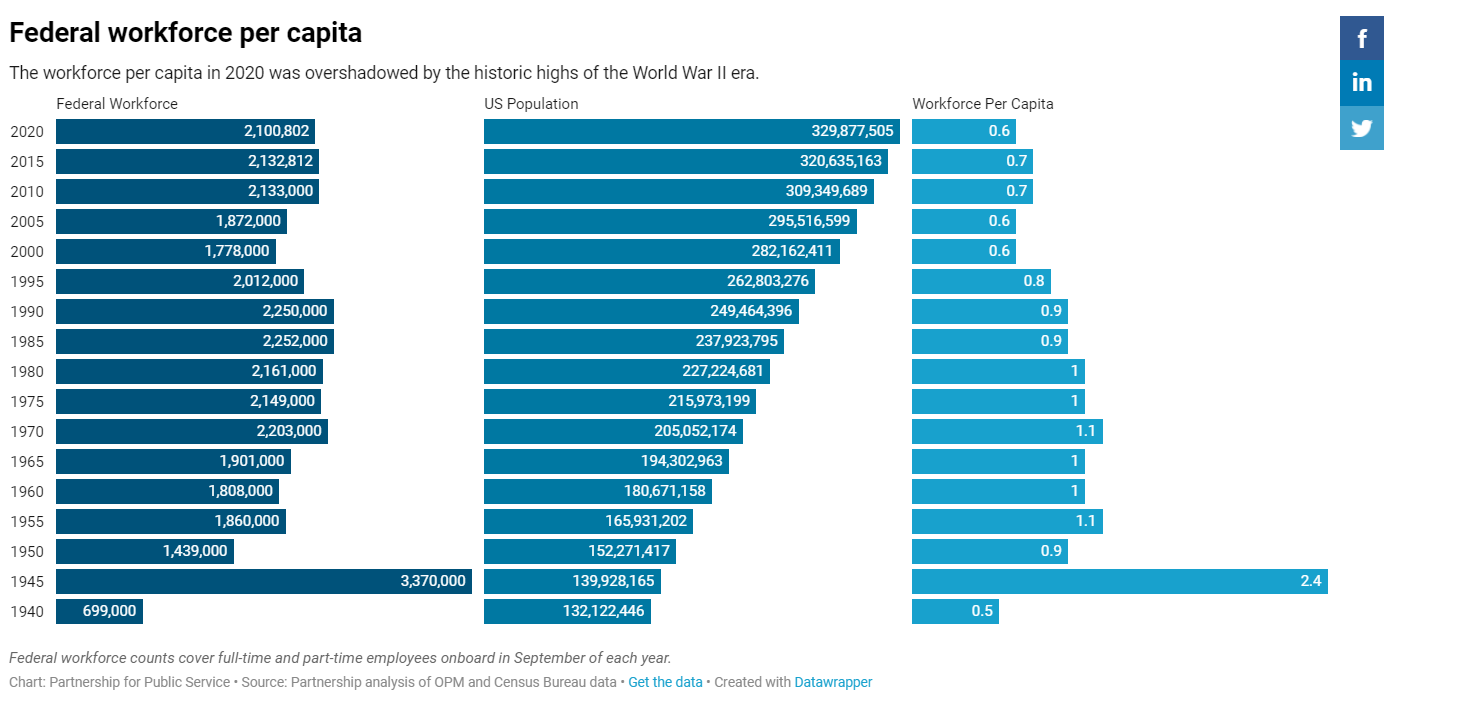
Agencies scrambled and largely succeeded to bring their onboarding processes online at the start of the pandemic.
And throughout 2020, the federal government managed to bring on more employees than it lost. That’s not so surprising, considering some agencies ramped up hiring, and some feds delayed their retirement plans.
Last July, for example, agencies hired 12,407 new people and lost 9,939 employees, according to the Partnership’s analysis.
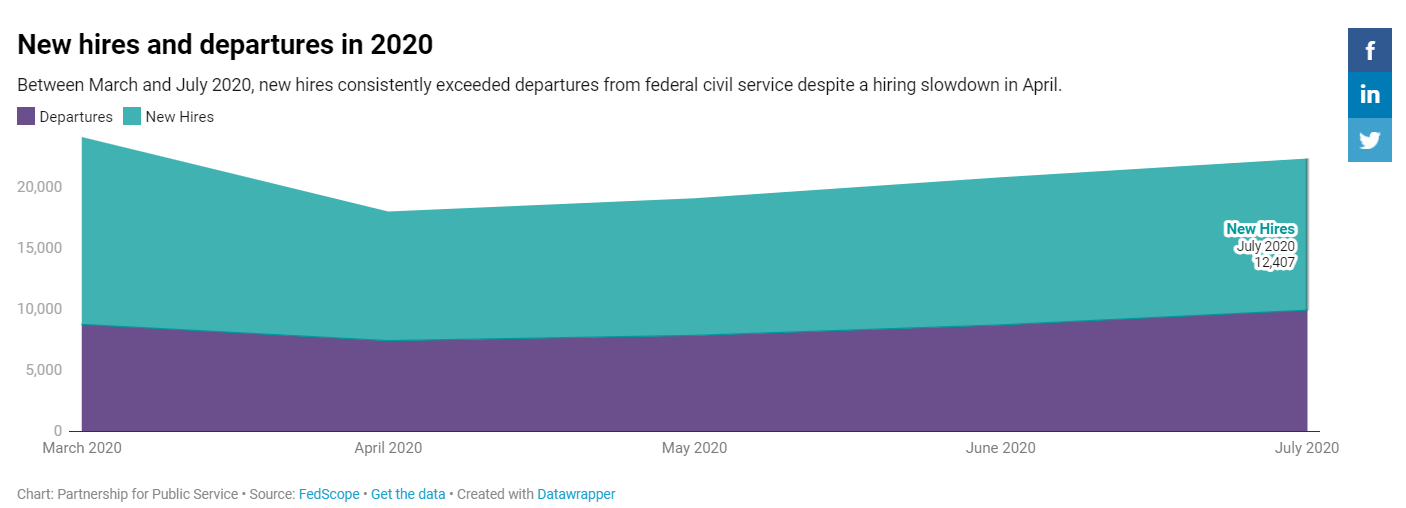
A total of 15 cabinet agencies increased the sizes of their workforces each quarter since the pandemic, according to the Partnership.
The Education Department’s workforce grew 2.7% each quarter between last March and December. The size of the Treasury Department’s workforce, which has seen its budget and mission responsibilities grow during the pandemic, went up 2.2% each quarter last year.
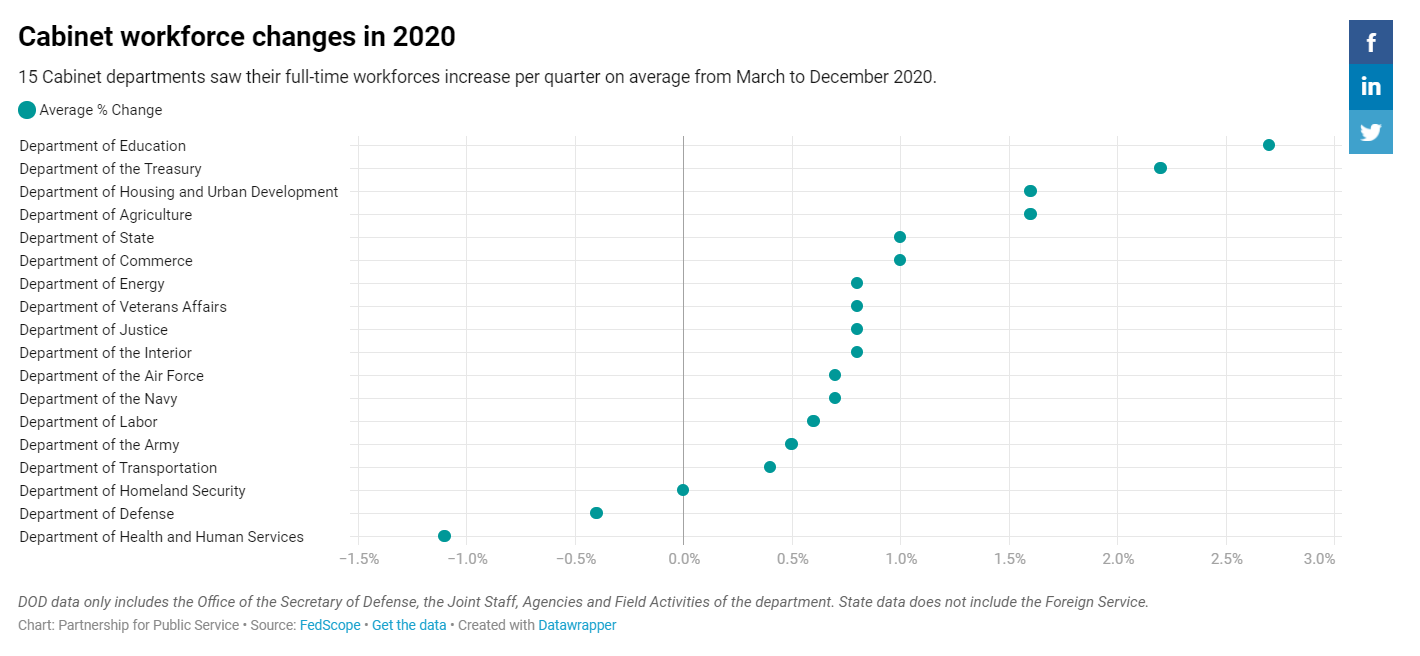
The workforces at the Agriculture Department and Department of Housing and Urban Development also grew, both at a rate of 1.6% each quarter in 2020.
USDA, HUD and Education have all seen their workforces shrink in recent years, and perhaps the hiring spree was an attempt to fill staffing gaps.
On the other hand, the size of the Department of Health and Human Services shrunk by 1.1% each quarter between last March and December.
The Department of the Veterans Affairs was the top employer in 2020, according to the Partnership. VA employees made up 19.4% of the federal workforce last year, ahead of the Army, Navy and Department of Homeland Security.
The Veterans Health Administration shortened its hiring process and made an aggressive push to hire more nurses, clinicians and HR specialists to help with the pandemic. Data shows they succeeded, with the VHA workforce increasing each quarter by 0.9%.
Other agencies on the front lines of the pandemic also made small hiring gains. The Food and Drug Administration and the Federal Emergency Management Agency added slightly more than 100 people each last year.
But other federal organizations on the frontlines of the pandemic fared much differently.
The Centers for Disease Control and Prevention lost about 1,000 employees between September and December last year, according to the Partnership’s analysis.
The National Institutes of Health saw similar staffing losses.
This all comes as the Biden administration delivers a preview of next year’s budget request to Congress, and it calls for big-time increases at many civilian agencies.
The administration said it’s an attempt to rebuild capacity at organizations that have been strapped by Budget Control Act caps over the last decade. It pointed to the NIHs and CDCs of the world as examples.
Is the federal workforce due for a big growth spurt?
Well, it’s a little too early to tell. No president gets everything he wants in his budget proposal, and Congress makes sure of that. The Trump administration tried to slash the size of civilian agencies, and though the federal workforce did shrink in some areas, data shows it grew in others.
It’s still unclear what Biden’s budget means for the size of the federal workforce. But it’s fair to say it probably won’t match the World War II era, or anywhere close.
Nearly Useless Factoid
By Alazar Moges
The last time an amendment was added to the constitution was in May of 1992. The 27th amendment stipulates that “No law, varying the compensation for the services of the Senators and Representatives, shall take effect, until an election of Representatives shall have intervened.”
Source: National Archives
Copyright © 2025 Federal News Network. All rights reserved. This website is not intended for users located within the European Economic Area.
Nicole Ogrysko is a reporter for Federal News Network focusing on the federal workforce and federal pay and benefits.
Follow @nogryskoWFED
Related Stories
